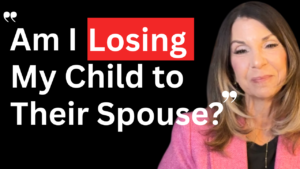Family estrangement is a complex issue affecting individuals and families worldwide, ranging from temporary disagreements to long-term severed ties. Reasons for estrangement vary and can include abuse, betrayal, differing values or beliefs, financial conflicts, substance abuse, mental health issues, or unresolved traumas. This article will explore how long estrangement in families usually lasts and what affects the duration of broken bonds within families. The information, scenarios, and data shared are not intended to point fingers at family members but rather to bring insight into this challenging and heartbreaking topic. My hope is for families to gain relief, move forward, and repair relationships when possible.
Understanding Family Estrangement
Understanding family estrangement involves recognizing its definition, causes, emotional impact, prevalence, and societal perspectives. Family estrangement can arise from various reasons, including unresolved conflicts stemming from differing values, lifestyles, or unresolved issues within the family. Additionally, emotional, physical, or psychological abuse, betrayal, substance abuse, untreated mental health conditions, and unresolved past traumas can sever familial bonds.
The emotional and psychological impact on individuals involved in family estrangement is significant. It triggers feelings of grief and loss, including the loss of support and belonging. Guilt and shame are experiences associated with relationship breakdown, and estrangement can contribute to heightened levels of anxiety and depression. Furthermore, it disrupts one’s sense of identity and can negatively impact self-esteem, leading to social isolation and a lack of traditional support systems.
Gaining accurate prevalence statistics on family estrangement is challenging due to the social stigma surrounding it. Society idealizes close-knit families, and estrangement is viewed as a failure or dysfunction. However, there is growing recognition and discussion of family estrangement among mental health professionals, researchers, and support networks. This increased attention has led to more open discussions and recognition of its impact.
Awareness and destigmatization of family estrangement are crucial for fostering an empathetic and supportive environment for individuals experiencing this challenging situation. By promoting understanding and empathy, society can create a space where individuals feel validated and supported in their experiences of family estrangement.
Factors Influencing the Duration of Family Estrangement
Various factors can influence the duration of family estrangement. Firstly, the nature and severity of the conflict or disagreement play a significant role. High-conflict situations or deeply entrenched disputes are more likely to prolong the estrangement, as the intensity and seriousness of the issues make resolution more challenging.
Another factor is a communication breakdown and unresolved issues within the family. The estrangement is likely to persist when there is a lack of effective communication and unresolved problems. The inability to address and resolve the underlying issues prevents the healing process and may lead to an extended period of distance between family members.
Individual personality traits and coping mechanisms also impact the duration of family estrangement. Characteristics such as stubbornness, avoidance, or difficulty expressing emotions can hinder reconciliation and prolong estrangement. On the other hand, individuals who have effective coping mechanisms and are open to seeking therapy or mediation are likelier to shorten the estrangement duration.
Cultural, societal, and generational influences also influence the duration of family estrangement. Cultural or societal norms around family relationships and expectations can promote reconciliation or perpetuate estrangement. Additionally, generational differences in values, beliefs, or attitudes toward family dynamics can also influence the length of estrangement.
Understanding these factors that influence the duration of family estrangement can help individuals gain insight and perspective. It allows them to assess the potential challenges and factors, enabling them to make informed decisions and take appropriate steps toward healing and reconciliation.
Temporary Estrangement
Temporary estrangement can occur for various reasons, often stemming from heated arguments, disagreements, or conflicts that require time and space to cool down. In such cases, individuals may temporarily create distance to allow emotions to settle and tensions to subside. Additionally, external stressors or significant life transitions can strain relationships temporarily, leading to temporary estrangement as individuals navigate these challenging circumstances.
Open and honest communication is essential in addressing the underlying issues and concerns contributing to the estrangement. By expressing thoughts and feelings honestly, individuals can better understand each other’s perspectives and work towards finding common ground. Active listening, empathy, and a willingness to understand the other person’s point of view are crucial in fostering constructive dialogue and promoting resolution.
Seeking professional help or mediation can also be vital in resolving temporary estrangements. Involving a neutral third party who can facilitate communication and provide guidance can create a safe and supportive environment for addressing conflicts and finding solutions. These professionals can help individuals navigate through difficult conversations and assist in developing healthy communication patterns and relationship dynamics moving forward. Setting clear boundaries and establishing new relationship dynamics based on respect, understanding, and compromise are essential to prevent recurring conflicts and sustain a healthy connection.
Forgiveness and empathy are critical elements in the reconciliation process of temporary estrangements. Willingness to forgive and let go of past grievances can pave the way for healing and re-establishing the relationship. Empathy allows individuals to understand each other’s experiences and perspectives, fostering compassion and a desire to rebuild trust. By embracing forgiveness and empathy, individuals can move forward from the temporary estrangement and work towards rebuilding a healthier relationship.
Temporary estrangements allow individuals to reflect on their actions and behaviors and the dynamics of the relationship. Acknowledging personal accountability and taking responsibility for one’s role in the estrangement is essential. Through self-reflection and personal growth, individuals can develop greater self-awareness, learn from past mistakes, and make positive changes that contribute to reconciliation and preventing future conflicts.
Long-Term Estrangement
Long-term estrangement is often rooted in complex and deep-seated causes, typically involving significant and unresolved issues. Ongoing abuse, betrayal, or deeply entrenched conflicts can contribute to the prolonged nature of the estrangement. In some cases, the estrangement may be fueled by complex family dynamics, including dysfunctional patterns or generational trauma that have accumulated over time.
The psychological and emotional effects of long-term estrangement can be profound for both parties. Grief, anger, resentment, and abandonment are commonly experienced. The estranged individuals may endure a deep sense of loss and a diminished sense of self and carry emotional scars that persist over time.
Individuals can focus on personal growth, self-reflection, and healing from past traumas to cope with long-term estrangement. This may involve seeking therapy or participating in support groups to process emotions and gain insights into the dynamics that contributed to the estrangement. Establishing healthy boundaries becomes crucial to protect emotional well-being and ensuring personal growth is not hindered. Self-care activities that bring you joy can promote overall mental and emotional health.
Resolving long-term estrangement is a complex and individual journey. Reconciliation may not always be possible or appropriate in every situation, and each person’s path to healing and recovery will be unique. The focus should be on personal well-being, growth, and finding inner peace, even if that means accepting and moving forward without re-establishing the relationship.
Factors That May Prolong or Shorten Estrangement
Several factors can play a role in either prolonging or shortening the duration of estrangement between family members. One crucial factor is individuals’ willingness to engage in therapy or mediation. Those open to seeking professional help are more likely to resolve conflicts and ultimately shorten the duration of estrangement.
Engaging in personal growth and self-reflection is another factor that can significantly impact the duration of estrangement. When individuals take the time to reflect on their behaviors and emotions, it can lead to increased self-awareness, empathy, and readiness to rebuild relationships. Individuals will be better equipped to address the underlying issues contributing to the estrangement by actively working on personal growth.
Life events or significant changes can also trigger reconnection between estranged family members. Important events such as births, deaths, or milestones have the potential to make individuals reevaluate the importance of family and may motivate them to seek reconciliation.
External support systems can also significantly impact the duration of estrangement. Strong support systems, including friends, partners, or support groups, can provide individuals with encouragement, guidance, and a different perspective. A robust support network can offer emotional support and help individuals navigate the complexities of family estrangement, potentially shortening its duration.
Reconciliation and Healing
Reconciliation and healing are essential aspects of navigating family estrangement. During the period of estrangement, it is crucial to prioritize self-care and healing to promote emotional well-being and resilience. Engaging in activities that promote relaxation, self-reflection, and personal growth can aid in the healing process. Seeking support from trusted friends, support groups, or therapists can provide an outlet to process emotions and gain valuable perspective.
When seeking reconciliation and rebuilding relationships, it is vital to take proactive steps. Initiating open and honest communication with the estranged family member is a crucial first step. A genuine desire to reconcile and rebuild the relationship sets the foundation for meaningful dialogue. Taking responsibility for one’s role in the estrangement and demonstrating accountability and a willingness to make positive changes is vital.
Active listening and empathy play a significant role in the reconciliation process. Bridges can be built by seeking to understand the other person’s perspective and validating their experiences. Offering a sincere apology for any hurt or pain caused shows genuine remorse and a commitment to change. Establishing clear boundaries and expectations moving forward helps rebuild trust and maintain healthy dynamics.
Seeking professional help, such as family therapy, can be instrumental in the reconciliation process. A skilled therapist experienced in family dynamics, and reconciliation can provide a safe and structured environment for open communication. They can help identify patterns, offer guidance on conflict resolution, and support the process of healing and rebuilding relationships. Individual therapy can also be beneficial in addressing personal issues and emotions related to estrangement.
Reconciliation may not always be possible or advisable in certain situations. Cases involving ongoing abuse or where one party refuses to engage in the process may require focusing on personal healing, setting boundaries, and creating a supportive network of relationships outside the estranged family dynamics. Each situation is unique, and the path to reconciliation will depend on the specific circumstances and willingness of all parties involved.
Conclusion
Family estrangement is a complex and challenging issue that affects individuals and families worldwide. Understanding the duration of family estrangement provides insight, validation, and guidance for individuals navigating this challenging experience. It reduces stigma, promotes empathy, and encourages individuals to prioritize their mental well-being while seeking avenues for healing and reconciliation.
The factors influencing the duration of estrangement can vary, including the nature of the conflict, communication breakdown, individual traits, and cultural influences. Temporary estrangements often arise from temporary disagreements, while long-term estrangements stem from deep-rooted and complex causes.
Resolution strategies differ for temporary and long-term estrangements, with open communication, empathy, and forgiveness playing crucial roles. Factors such as willingness to engage in therapy, personal growth, life events triggering reconnection, and external support systems can either prolong or shorten the duration of estrangement.
Reconciliation and healing require self-care, open communication, accountability, and establishing healthy boundaries. Seeking professional help, such as family therapy, can provide valuable guidance.
While reconciliation may not always be possible, focusing on personal healing and creating a supportive network is essential. Ultimately, the goal is for individuals to find relief, move forward, and repair relationships when possible, promoting well-being and growth within families.









